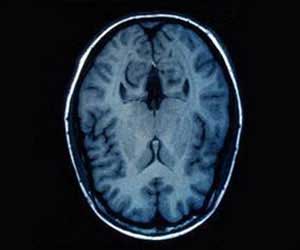In mice and men, the inside brains are alike, a relatively big football-shaped region called the thalamus acts like a switchboard, providing the prefrontal cortex.

Essential as this "thalamocortical" partnership is, neuroscientists have understood very little about the connections coming from a matrix of cells in the so-called "nonspecific thalamus," where information other than from the senses is relayed. In a new paper published Dec. 5, 2012, in the Journal of Neuroscience, Brown University researchers report the first direct measurements in mice of cause-and-effect responses between the key thalamus cells in that matrix and those in the prefrontal cortex.
"These thalamic areas comprise the vast majority of the thalamus, but we know virtually nothing about the physiology of how they control [the] cortex," said one of the lead authors, Scott Cruikshank, assistant professor (research) of neuroscience at Brown.
Among the team's findings is that the nonspecific thalamus signals are most strongly received, at least at first, by inhibitory neurons in the outermost layer of cortex (layer 1). Neuroscientists had assumed that these signals instead mainly poured into excitatory cells of the cortex. It is only over time, with repetition of the thalamic signals, that the inhibitory layer 1 cells respond less strongly while the excitatory cells maintain a steady response. The result is a pattern in which the net effect of the thalamus signals is inhibitory in the cortex at first, but eventually gives way to a steadier, more even state of excitation over a few hundred milliseconds.
That ultimately sustained pattern of activation stands in stark contrast to the way the sensory signals from the specific thalamus play out in the cortex. The resulting excitation in those circuits starts out strong and then weakens with repetition — consistent with how people cease to notice sights, smells, and other sensory inputs after a while if they don't change.
A large part of the reason why neuroscientists didn't know this before is because the measurements that Cruikshank and his co-authors made were difficult, if not impossible, to perform using traditional electrical stimulation and recording techniques. Once mouse brain tissue is sliced up, the long connections that the thalamus sends to the cortex, called axons, are severed. Electrically stimulating the axons where they connect to cortex cells, but nothing else around them, was impossible to do.
Advertisement
Meanwhile the researchers recorded the electrical activity of the various cortical cells the thalamic axons connected to, to see how they responded to stimulation of the thalamic axons. Sometimes the researchers recorded just the layer 1 inhibitory neurons, sometimes they recorded just the deeper-layered excitatory neurons and sometimes they recorded the different neurons' responses simultaneously. Notably, the outer-layer and deeper-layer cortical neurons are connected to each other as well.
Advertisement
Cruikshank said the team does not yet know what the behavioral significance of that steady state is, but it could be related to the maintenance of a baseline of consciousness or attention, perhaps to keep the prefrontal cortex ready to accept and process information from other sources, such as sensory signals. Prior experiments have shown that when the nonspecific thalamus is damaged, subjects can fall into a coma, but that when the nonspecific thalamus is stimulated the cortex becomes more aroused.
Now, at least, neuroscientists know how that connection is being made.
Source-Eurekalert











